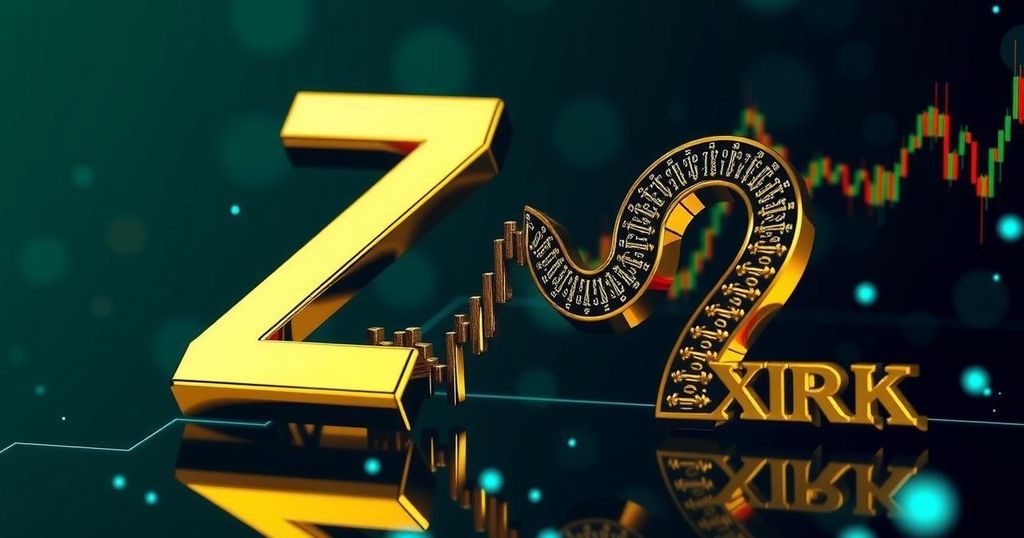Implications of the Federal Reserve’s 50 Basis Point Rate Cut on Bitcoin
Summary
Market observers are analyzing the potential effects of the Federal Reserve’s recent 50 basis point interest rate cut on Bitcoin and the broader cryptocurrency market. Historically, such cuts have bolstered Bitcoin’s price, yet the current economic context presents challenges, including inflation and a shift towards conservative investment strategies among institutional players. Although short-term optimism exists, caution is advised as recession fears loom.
The Federal Reserve recently implemented a significant reduction in interest rates by 50 basis points (bps), lowering the target range to 4.75%-5%. This marks the first interest rate cut in four years, raising questions about its potential impact on financial markets, especially on cryptocurrencies like Bitcoin. Historically, rate cuts have been conducive to the growth of riskier assets; however, the current macroeconomic climate introduces complexities that obscure the effect this decision will have on the crypto landscape. Bitcoin has previously thrived in low interest rate environments. For example, during the significant interest rate reductions from early 2020 to late 2021, a period marked by the Federal Reserve lowering rates to nearly zero due to the COVID-19 pandemic, Bitcoin surged from approximately $3,850 in March 2020 to an all-time high of $69,000 by November 2021. Lower interest rates made traditional safe-haven investments, such as bonds, less appealing, thereby increasing investor interest in Bitcoin, which presented the possibility of higher returns. In contrast, the economic situation in 2024 presents different challenges compared to 2020-2021. The recent rate cut might rekindle some interest in Bitcoin, but the backdrop is significantly different from previous years. Following a prolonged rate-hiking period aimed at combating inflation, the market is now confronting the dual pressures of inflationary concerns and the aftermath of higher borrowing costs, which previously deterred investments in speculative assets like Bitcoin. As the Federal Reserve’s focus shifts back towards rate cuts, there exists cautious optimism regarding Bitcoin’s potential resurgence. Nonetheless, analysts have advised prudence; interest rates remain notably higher than the near-zero thresholds experienced during the height of the pandemic. Additionally, the maturation of the crypto market, alongside an influx of institutional investors adopting a conservative investment approach, further complicates future predictions. Moreover, the aggressiveness of the latest rate cut, which exceeds expectations of a more modest 25 bps cut, raises concerns reminiscent of past economic downturns. Historical patterns indicate that significant cuts previously instituted by the Fed have often preceded market declines and increased unemployment rates. This historical context prompts questions about the real implications of the Fed’s current decision. In the short term, the rate cut could prove beneficial for Bitcoin and the entire cryptocurrency market, potentially enhancing investor demand for alternative assets amid a weakening U.S. dollar. Recently, Bitcoin has experienced an uptick of 2.75% within a 24-hour span, temporarily reapproaching the $62,000 mark. However, expectations for an explosive bull market akin to that of 2020-2021 necessitate tempered optimism, especially in light of potential recessionary fears that could compel investors to liquidate riskier positions, thereby exerting downward pressure on asset values.
The article discusses the implications of the Federal Reserve’s decision to cut interest rates by 50 basis points, particularly focusing on its potential impact on Bitcoin and the broader cryptocurrency market. It contextualizes this rate cut within historical patterns, examining how similar actions have influenced Bitcoin’s performance during previous economic cycles. The article also highlights the differing economic landscape between the current situation and the previous pandemic environment, noting the rising inflation and the maturation of the crypto market.
In conclusion, the Federal Reserve’s recent decision to cut interest rates by 50 basis points may create favorable conditions for Bitcoin, akin to previous low-rate environments. However, it is essential to exercise caution due to the current economic realities, including persistent inflation and the behavior of institutional investors. While the market may see some short-term benefits, potential recession concerns could overshadow the optimism surrounding Bitcoin’s price movement.
Original Source: thecryptobasic.com







Post Comment